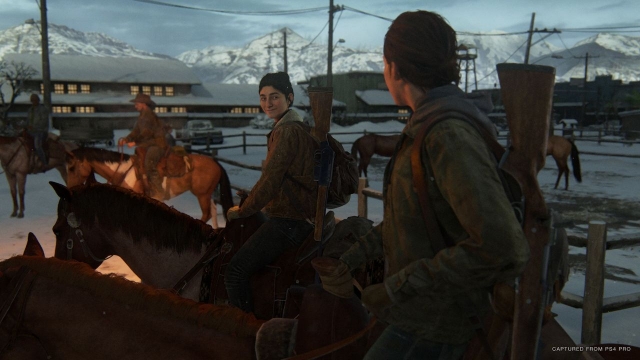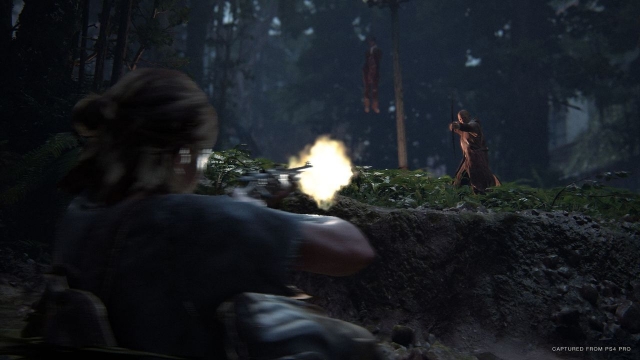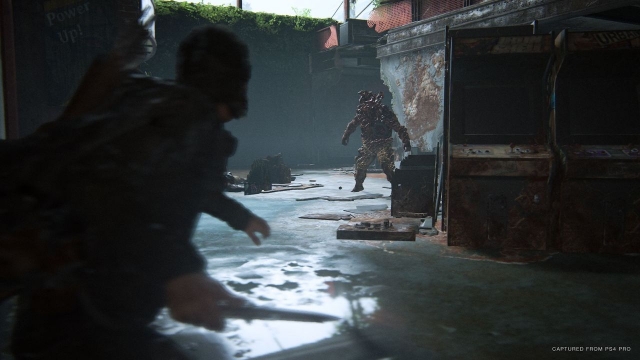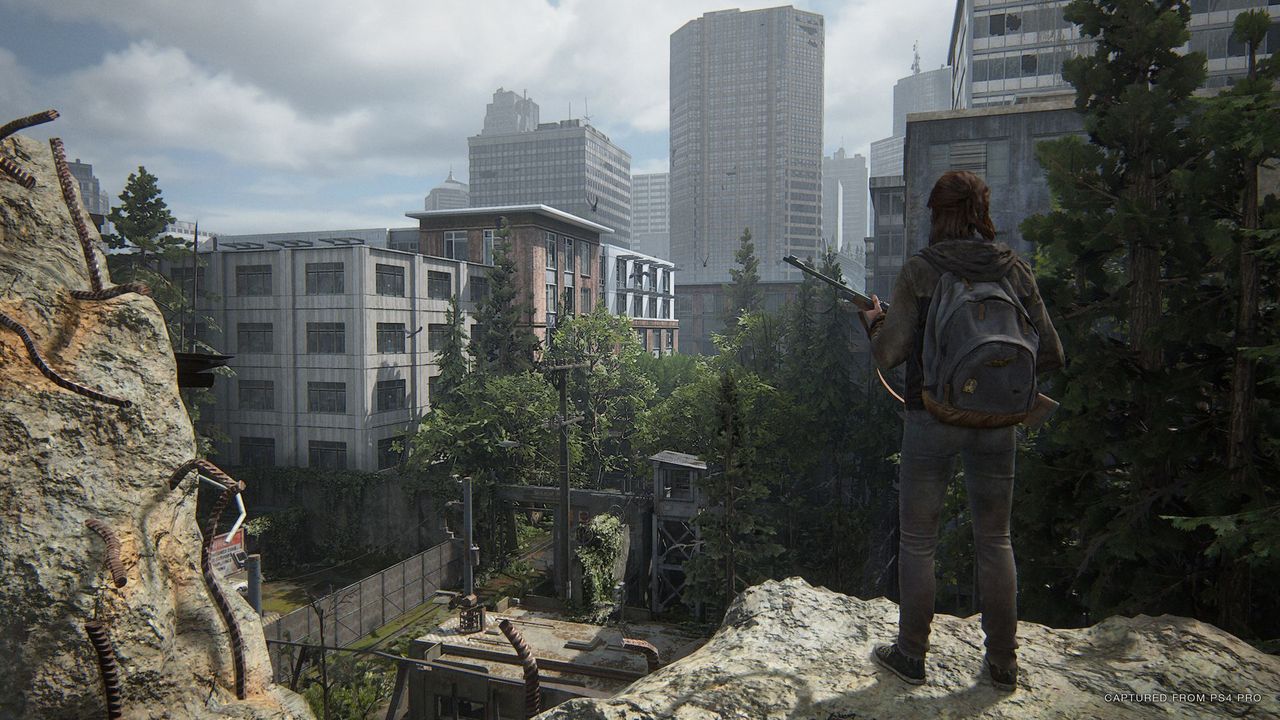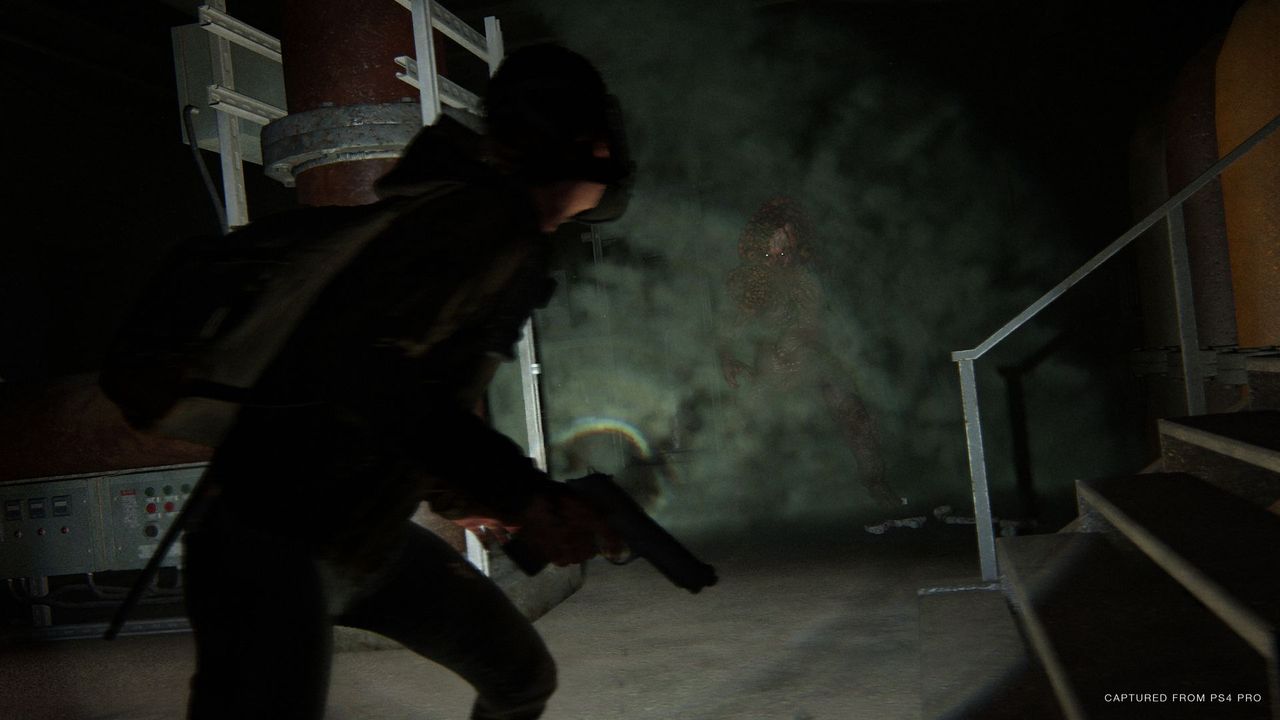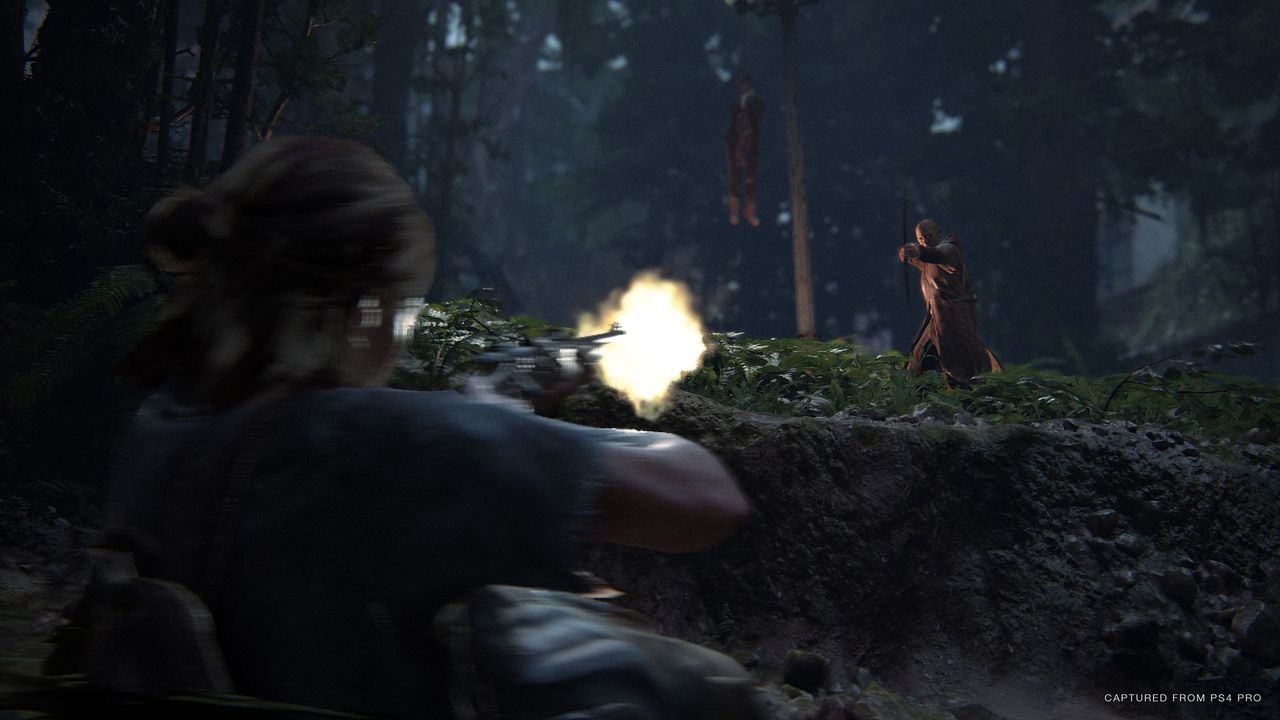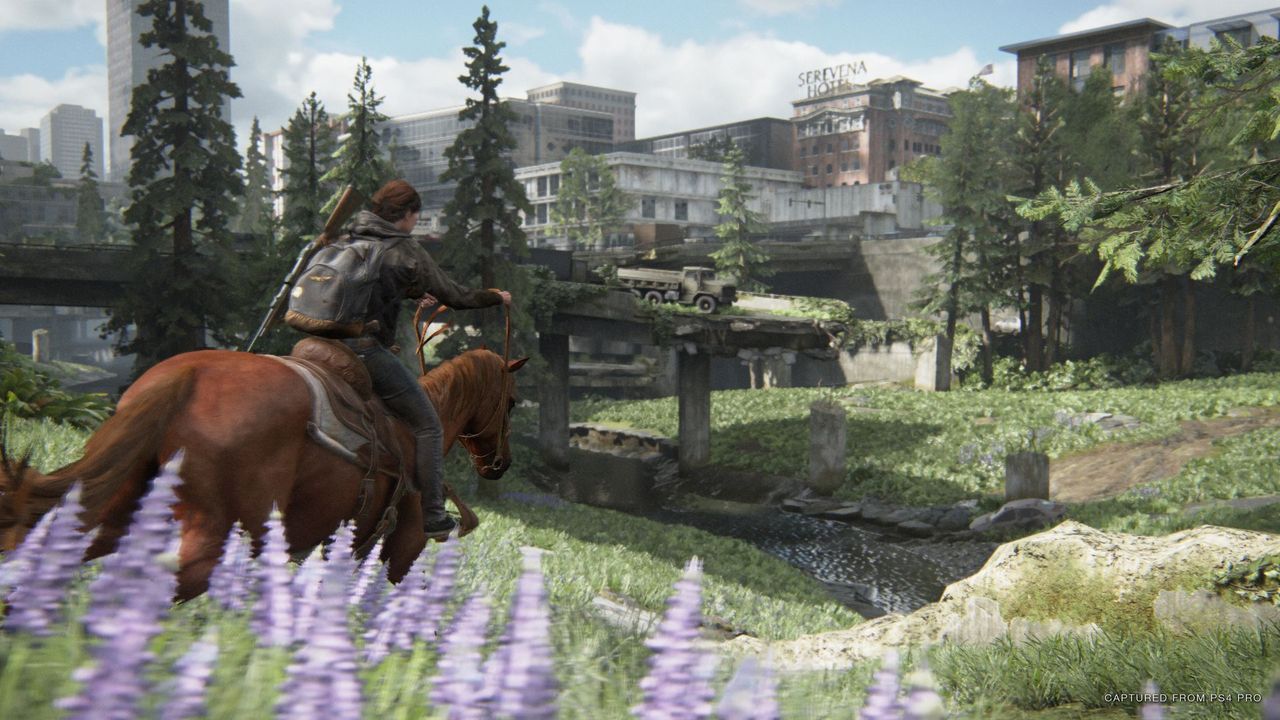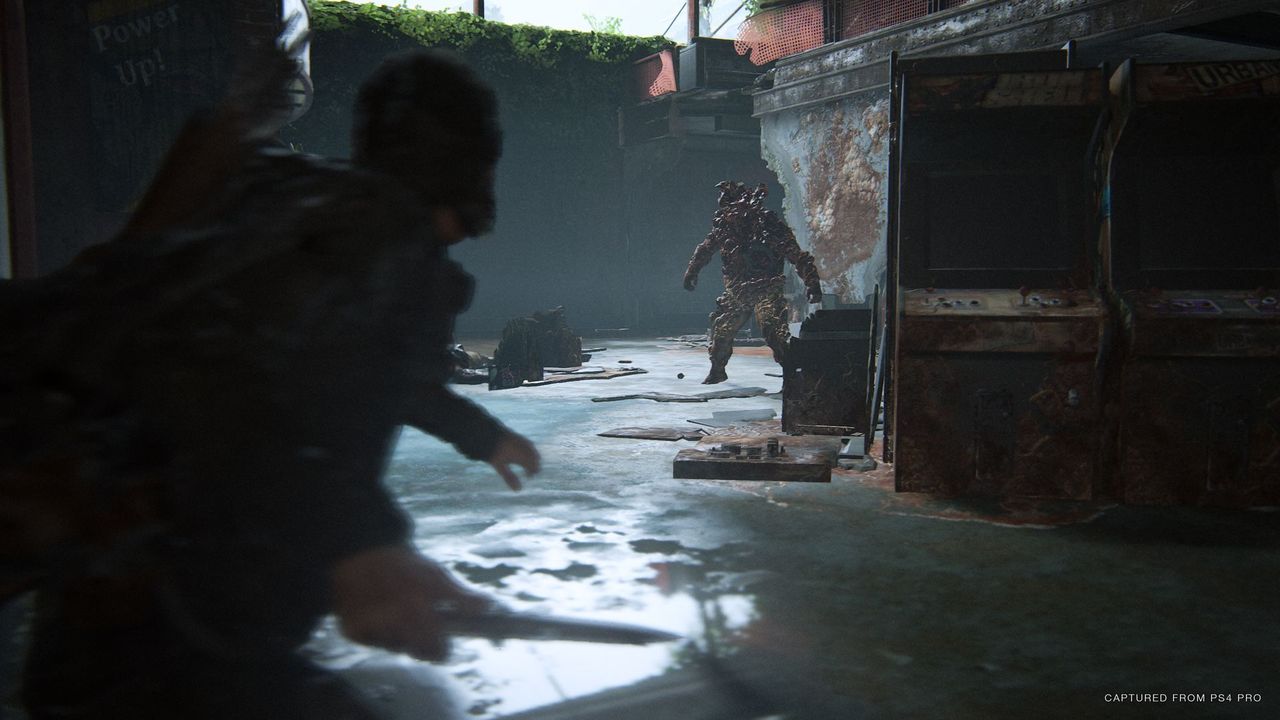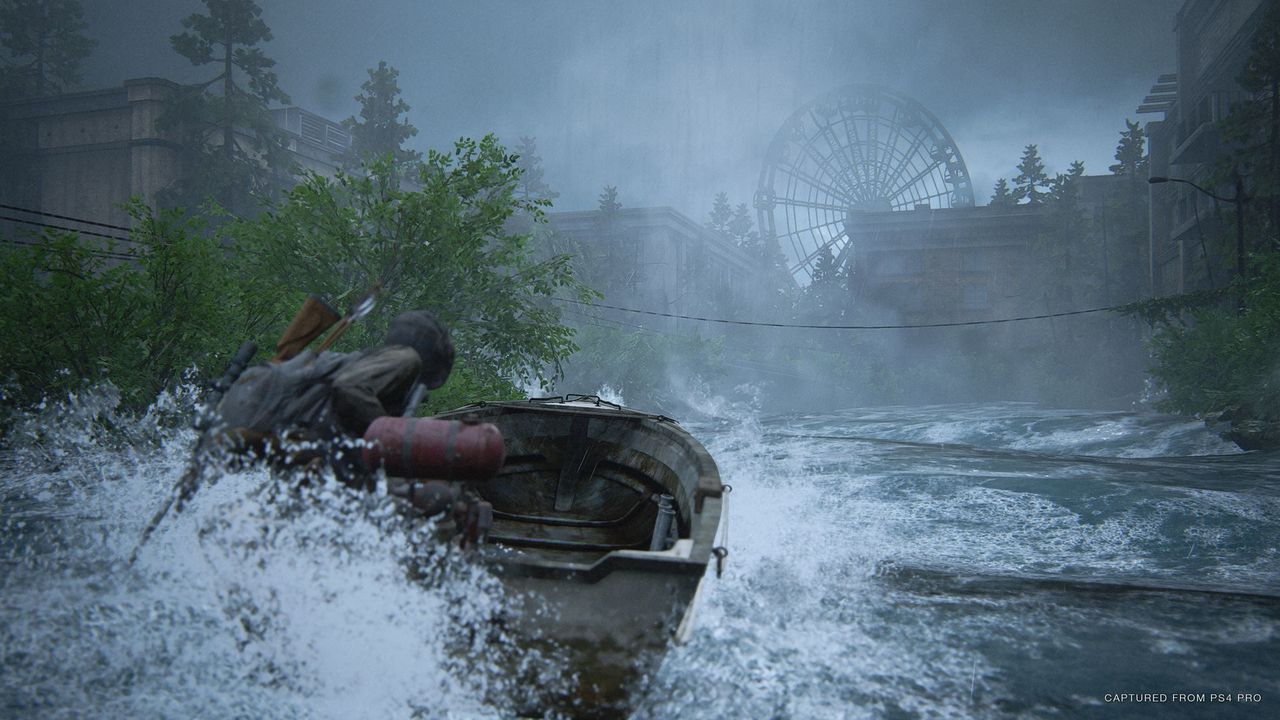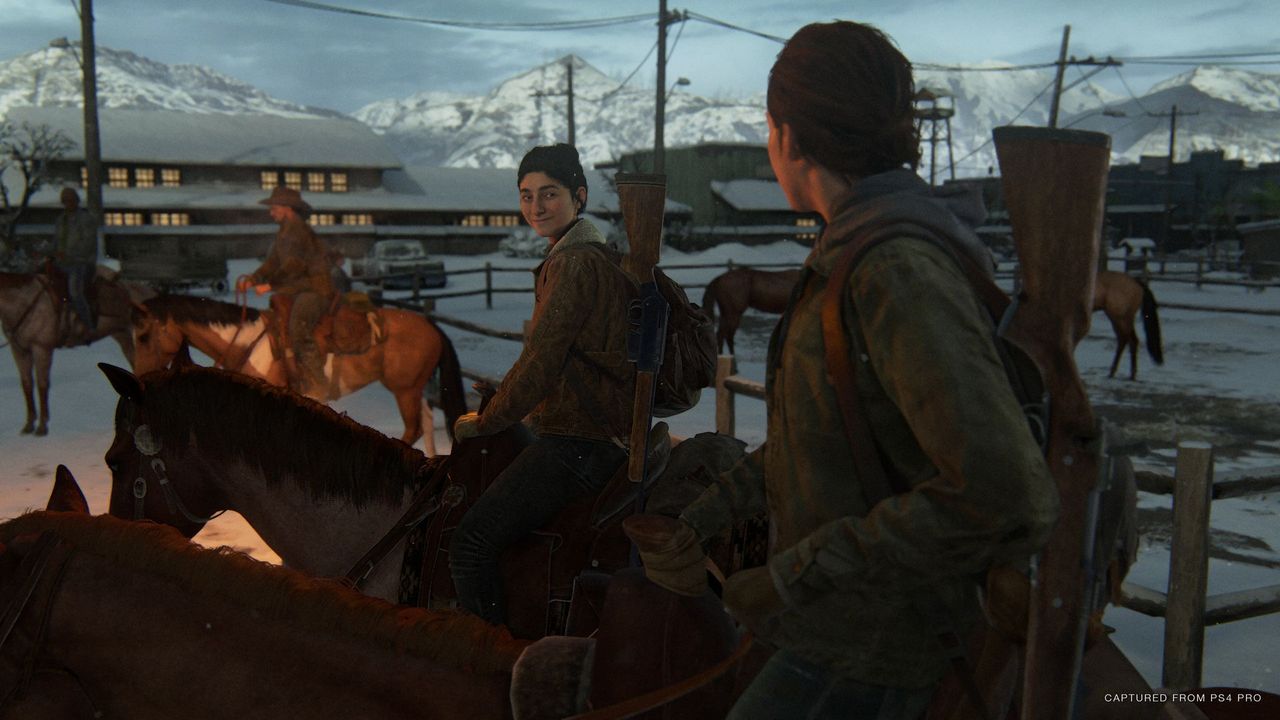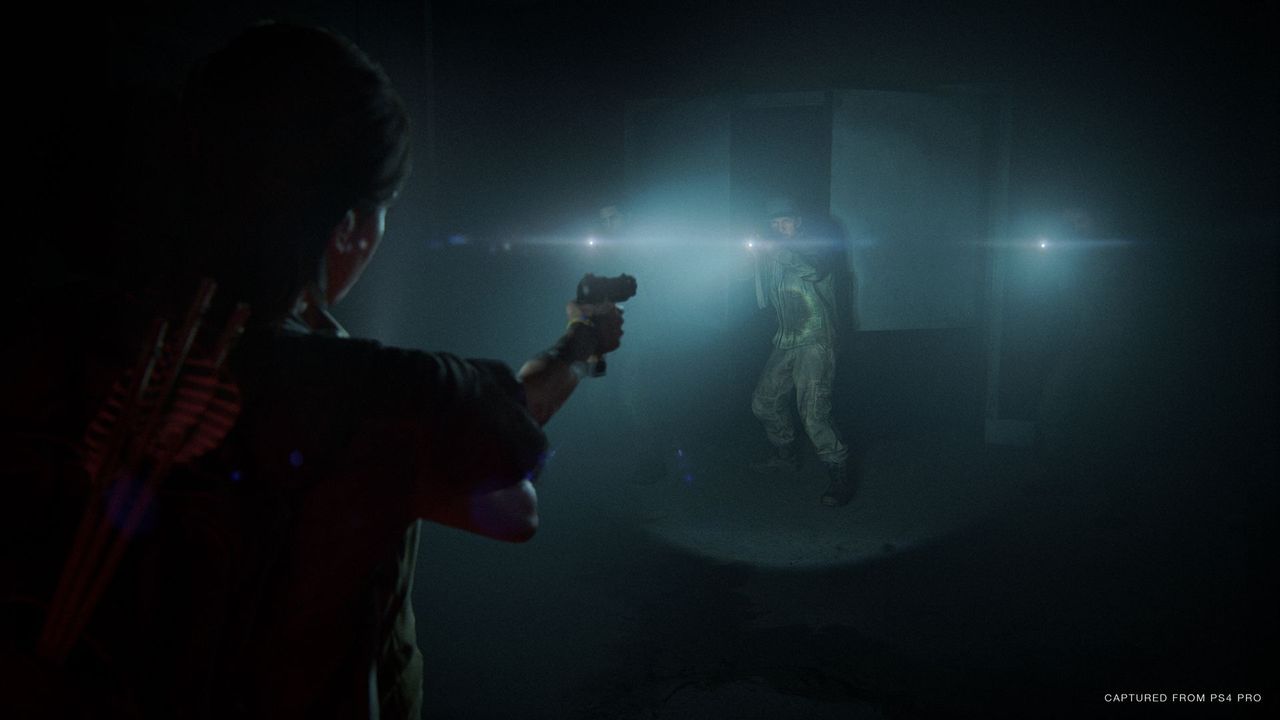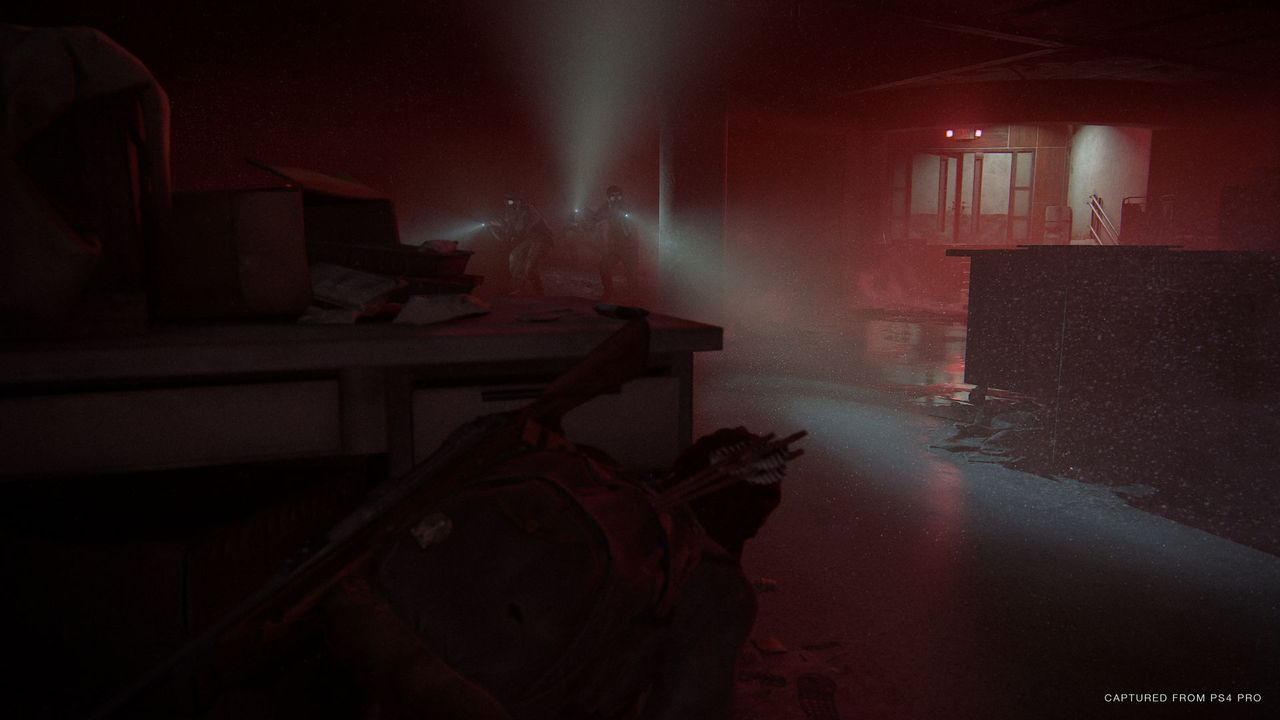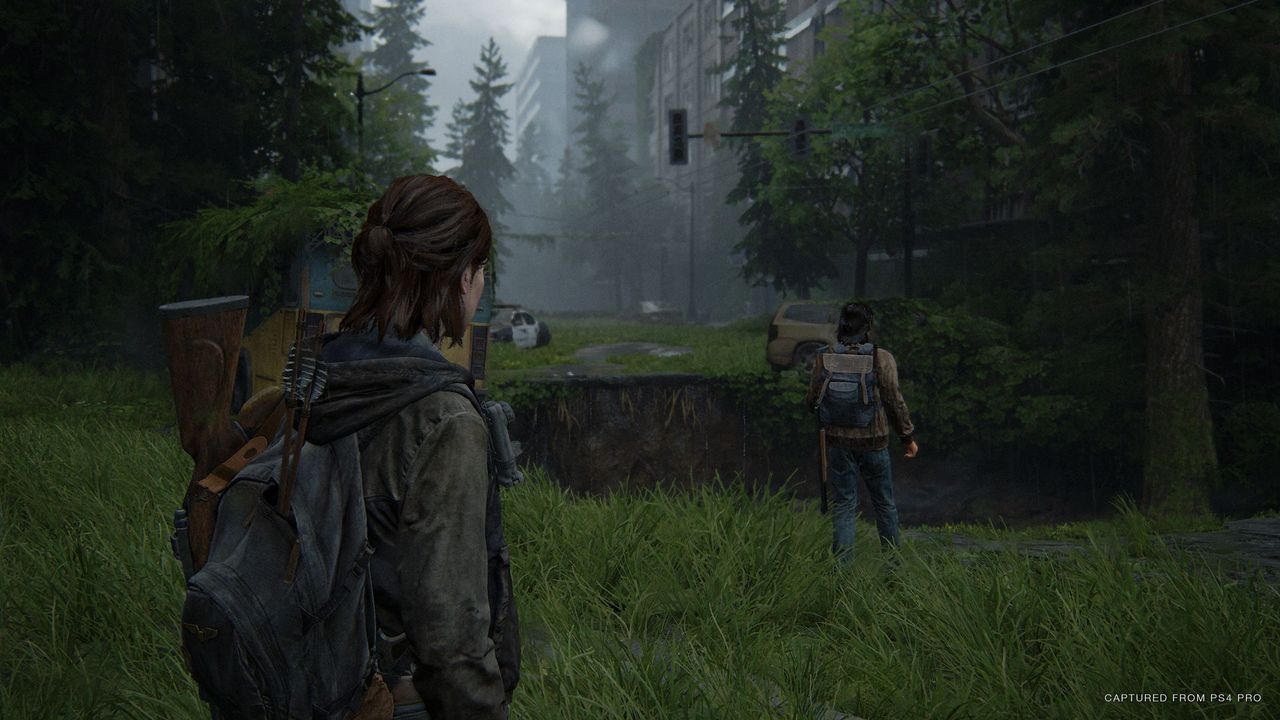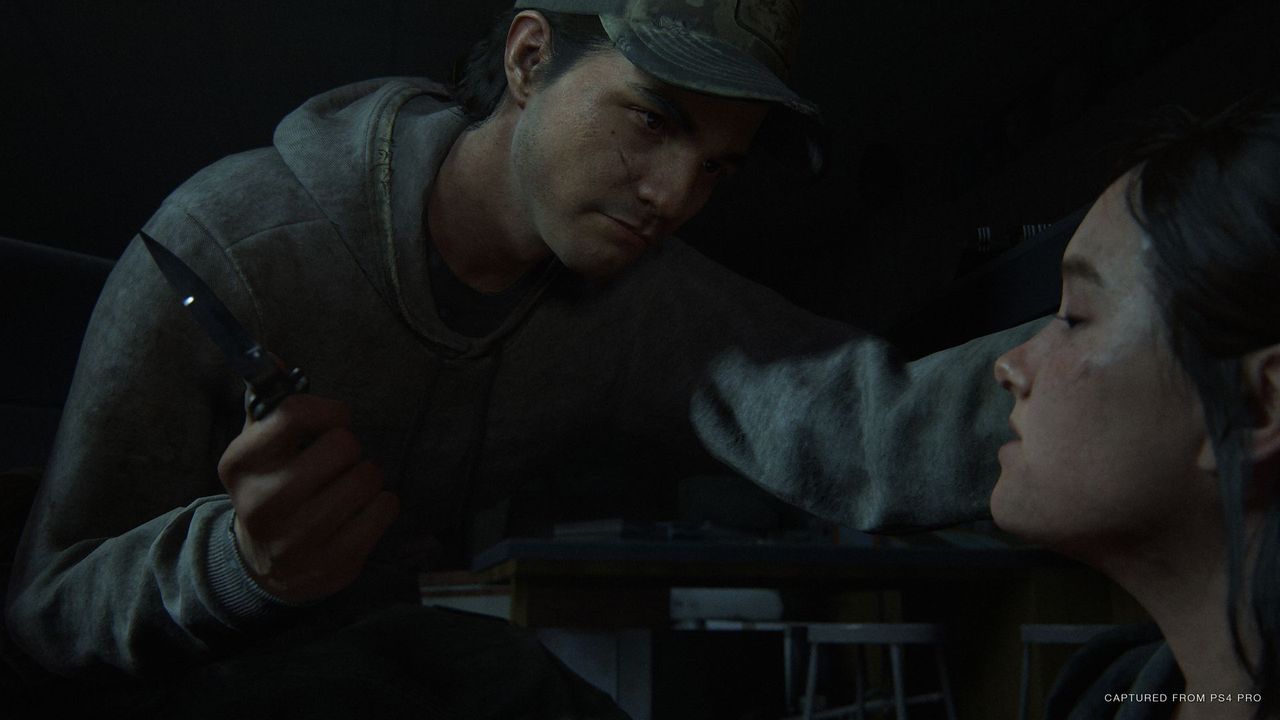The Last of Us Part II
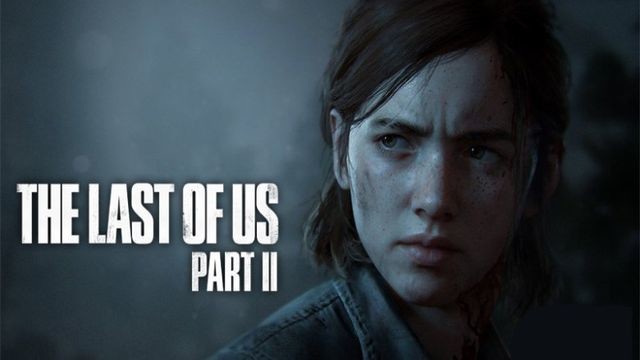
2013 brought The Last of Us to the world and with it came arguably the most compelling story ever told in a video game. It began as a story about a man named Joel losing his daughter senselessly amid complete chaos due to a brain infection sweeping the nation. Fast forward 20 years and Joel’s a bit more cynical with the world in shambles and he finds himself in what he thinks is a rough spot – having to escort a young girl named Ellie across the country. Along their journey, he reconnects with his younger brother Tommy and friends that have lost their own loved ones amid the infection. Joel had closed himself off to people as much as he could – but he couldn’t do it with Ellie. With her, he found a second chance at raising a daughter, and when given the choice to possibly use her immunity to save the world at the expense of her own life, he couldn’t bear losing another daughter and did what he needed to in order to prevent her death.
Part II begins in a powerful way, with Joel telling Tommy what he did and struggling with knowing that he might have made things worse for all of humanity – echoing a concern that many had with the first game’s ending. Like the original, Part II is a character study with a gameplay wrapper, and it’s a compelling story from start to finish – with small character moments weaved into every cutscene that build the world up even more than the first game. Tiny things like strumming a guitar with Joel using the touch pad makes the DualShock 4 feel like an essential part of the experience and is the kind of little touch that Naughty Dog has thrown into their games to show how much care went into them. Beyond being a marvel of in-game storytelling, The Last of Us (TLOU) was also a finely-crafted third-person adventure.
However, with almost seven years passing between games, does the sequel hold up to the extra scrutiny of not only being a sequel, but facing that much more evolution in the genre? Since TLOU, we have more stealth integration in games than we did in 2013, with variable difficulty levels making games more accessible. Fortunately, in this regard, Part II excels in ways that no game has before by allowing an unparalleled amount of access when it comes to tailoring the user experience. You have traditional difficulty levels, but can tinker with individual settings to reflect how finely-tuned you want things like changing how perceptive enemies are, how much health you have, and how many resources you have available to you.
The latter change is one that makes a bigger impact than one might think since resource management was something you had to keep in mind a lot in the first game to do things like heal in real-time or make sure that you had enough ammo to survive a tougher battle. In terms of making the game more accessible, it’s a great move to offer up so much customization over smaller details because there might be some areas, like stealth, you aren’t strong at – so buffing yourself for those sections is smart, and you can switch things around as much as you want from the pause menu. So if doing that allows you to get past an area you aren’t good at, but then go to an area that you are, like a shooting gallery-esque horde of enemies, it can easily result in getting more out of the game than you would otherwise.
The combat flow of TLOU was, to that point, the best that Naughty Dog had produced. While Uncharted 4 may not have been their greatest story, it did top TLOU in terms of combat – and now TLOU Part II stands atop the mountain. When it comes to merging melee combat, shooting, and stealth, nothing tops Part II. Stealth feels far more natural now than it did in the first, with environmental usage going up quite a bit and requiring a bit more evasion to succeed in densely-populated areas. You’ll also have to deal with scent trails attracting attack dogs and either covering them up or finding new areas to run and hide.
Hiding can work out nicely because it lets you change your attack strategy, and you may wind up in a better position. If you’re able to escape after getting too close, you can wind up behind or off to the side and picking off a couple of folks quickly, and maybe even throwing a stealth kill into the mix too. Stealth is an area that I usually find difficult in games, but here, the structure of it blends just enough action with strategy to keep things engaging. Blending hand-to-hand combat into it is great too, since you can stealth-kill a few folks and then save a couple for melee combat – which feels more rewarding and looks better than ever thanks to more robust animation than before.
Gunplay feels more natural, with better aiming than the original – although it’s a shame that gyroscopic aiming isn’t used given how the DualShock 4 can do it and there’s such great integration of the device’s touch pad. That aside, each gun does feel different and offers up a different level of oomph when firing. You can also craft upgrades to guns to make them quieter or increase their ammo counts, and it takes less time to upgrade on the fly than it did before. There is lots of little quality-of-life upgrades like those that make Part II a more fun experience than the original.
Part II is a feast for the eyes as well and features the best work I’ve seen yet on faces conveying subtle emotions – from disappointment, to bubbling rage. The original game played off a lot of human emotions and did a better job than anything to that point at conveying them – and now we’re seeing the sequel follow up in that same way. Beyond getting emotions across, there’s a lot of diversity when it comes to running and movement animation, and great attention to detail with regards to environments. Walking in snow results in real-time footprint tracking, while mud will do the same and build up a bit on you. The little slice of life touches add so much to the reality of things and make you care that much more about the characters.
Of course, the acting is a big part of that as well and is another home run. Joel is more world-weary here and time has slowed his drawl down – he’s more beaten down, but remains a strong figure to Ellie. However, he now has to face his own guilt and knows inside that at any point, she can find out about his lie and destroy the most important bond in his life. Ellie, on the other hand, is finding her own way in life, love, and developing as a person – and knows that Joel has sacrificed a lot to help keep her safe. The cast’s chemistry remains strong and the sound design is incredible, with enemies being audible before they can be seen – and while that makes playing with headphones better, it’s also that much more terrifying thanks to things like jump scares and ominous sounds in the world itself.
The Last of Us Part II takes everything that made the first game such a sea of change in the industry and amplifies it. We have seen Naughty Dog itself raise the bar and while this is easily their best PS4 game, I think the original game’s narrative ever so slightly tops the sequel even if the scope is larger with a more expansive cast. Part II plays better than the first, with more involved stealth and combat along with many quality of life improvements to make it a more enjoyable experience. In terms of all-time great games, it is right up there with the original and you can flip a coin on which is “better”. The original hooks you more right away, while the sequel is more of a slow burn that builds everything up just a bit more. The Last of Us Part II is Naughty Dog’s finest game yet.
Reviewed By: Jeremy Peeples
Publisher: Sony Interactive Entertainment
Rating: 98%
——————————————————————————–
This review is based on a digital copy of The Last of Us Part II for the PlayStation 4 provided by Sony Interactive Entertainment.
 Game Over Online
Game Over Online